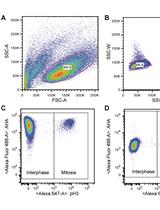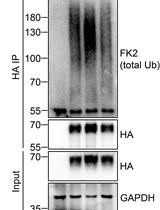- EN - English
- CN - 中文
Analyzing the Properties of Murine Intestinal Mucins by Electrophoresis and Histology
电泳和组织学检查分析小鼠肠黏蛋白的性质
发布: 2017年07月20日第7卷第14期 DOI: 10.21769/BioProtoc.2394 浏览次数: 20198
评审: Andrea PuharDavid A. CisnerosAna Santos Almeida

相关实验方案
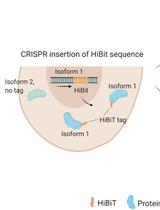
通过CRISPR-Cas9介导的HiBiT标签对高度同源蛋白水平进行异构体特异性半定量测定
Kristina Seiler [...] Mario P. Tschan
2023年07月20日 2183 阅读
Abstract
Specialized secretory cells known as goblet cells in the intestine and respiratory epithelium are responsible for the secretion of mucins. Mucins are large heavily glycosylated proteins and typically have a molecular mass higher than 106 Da. These large proteins are densely substituted with short glycan chains, which have many important functional roles including determining the hydration and viscoelastic properties of the mucus gel that lines and protects the intestinal epithelium. In this protocol, we comprehensively describe the method for extraction of murine mucus and its analysis by agarose gel electrophoresis. Additionally we describe the use of High Iron Diamine-Alcian Blue, Periodic Acid Schiff’s-Alcian Blue and immune–staining methods to identify and differentiate between the different states of glycosylation on these mucin glycoproteins, in particular with a focus on sulphation and sialylation.
Keywords: Sialylation (唾液酸化)Background
A layer of mucus protects the intestinal epithelium and primarily consists of mucins, water, proteins and inorganic salts. The viscous and gel-like properties of the mucus barrier, which enable it to physically protect and lubricate the mucous membranes, are conferred mainly by mucins. Mucins are large heavily glycosylated proteins and typically have a molecular mass higher than 106 Da. Mucins, however, are predominantly decorated with O-glycan sugars, which accounts for up to 80% of their molecular weight. The diverse site-specific and mucin-specific glycosylation patterns influence the properties of the mucin and therefore the mucus gel. It is well known that mucin glycosylation is altered in infection and disease (Arike et al., 2017; Hasnain et al., 2017). Here we describe methods to assess the amounts of intestinal mucins in murine models and assess the changes in glycosylation with a particular focus on sialylation and sulphation of mucins. Previous methods have not differentiated between mucins isolated from the secreted barrier or those stored within the goblet cells. Methods described here can be employed to assess the changes in secreted or goblet cell-stored mucins in each individual animal. Moreover, using high-iron diamine staining changes in amounts of mucins can also be correlated this with changes in mucin glycosylation.
Materials and Reagents
- Pipette tips (Thermo Fisher Scientific, FinntipTM Pipette Tip)
- 19.5 gauge needle (BD, catalog number: 305187 )
- Needles (BD PrecisionGlideTM Needle)
- Nitrocellulose membrane (Thermo Fisher Scientific, Thermo ScientificTM, catalog number: 88018 )
- BIOMAXTM BML film (Carestream Health, catalog number: 876-1520 )
- Microscope slides (Menzel Gläser, SuperFrost® Plus) (VWR, catalog number: 631-9483 )
- Cover slips (Fisher Scientific, catalog number: 12-546-2 )
- Histology cassettes, moulded lid (ProSciTech, catalog number: RCH40-W )
- Biopsy Pads, 100% Reticulated Foam (Trajan Scientific and Medical, catalog number: BPBL )
- Polystyrene cube
- 10 cm Petri dishes (Corning, catalog number: 430591 )
- Transfer pipette, polyethylene (Sigma-Aldrich, catalog number: Z350826-500EA )
- Cell scraper (VWR, catalog number: 734-0386 )
- D-TubeTM dialyzers (Merck, UK)
- C57BL/6 mice (Animal Resource Centre, WA, Australia)
- 100% ethanol (Sigma-Aldrich, catalog number: 443611 )
- Non-sterile phosphate buffered saline (PBS) (Thermo Fisher Scientific, catalog number: 10010031 )
- Urea (VWR, BDH®, catalog number: BDH4602 )
- Guanidinium chloride (GuCl) (Sigma-Aldrich, catalog number: G3272 )
- Ethylenediaminetetraacetic acid (EDTA) (Sigma-Aldrich, catalog number: E9884 )
- Dithiothrethiol (DTT) (Melford Laboratories, catalog number: MB1015 )
- Iodoacetamide (Sigma-Aldrich, catalog number: I6125 )
- Glycerol (Sigma-Aldrich, catalog number: G5516 )
- Bromophenol blue (Sigma-Aldrich, catalog number: B0126 )
- Sodium dodecyl sulfate (SDS) (Sigma-Aldrich, catalog number: L3771 )
- Tris base (Roche Diagnostics, catalog number: 10708976001 )
- Sodium chloride (NaCl) (Sigma-Aldrich, catalog number: S7653 )
- Sodium citrate (Sigma-Aldrich, catalog number: PHR1416 )
- Periodic acid (Sigma-Aldrich, catalog number: P7875 )
- Acetic acid (Sigma-Aldrich, catalog number: A9967 )
- Sodium metabisulphite (Sigma-Aldrich, catalog number: 31448 )
- Schiff’s reagent (Sigma-Aldrich, catalog number: 3952016 )
- N,N-dimethyl-p-phenylenediamine (HCl) (Sigma-Aldrich, catalog number: D5004 )
- N,N-dimethyl-M-phenylenediamine (HCl)2 (Sigma-Aldrich, catalog number: 219223 )
- Iron(III) chloride (FeCl3) (Sigma-Aldrich, catalog number: 157740 )
- Alcian blue 8GX (AB) (Sigma-Aldrich, catalog number: A5268 )
- Tween-20 (Sigma-Aldrich, catalog number: P1379 )
- Skimmed milk powder (Sigma-Aldrich, catalog number: 1443825 )
- Odyssey® blocking buffer (LI-COR, catalog number: P/N 927-40000 )
- Muc2 antibody: Muc2.3, Rabbit polyclonal antibody (made in house) or H300 Muc2, Rabbit polyclonal antibody (Santa Cruz Biotechnology, catalog number: sc-15334 )
- Enhanced chemiluminescence substrate, Western Lightning® Plus-ECL (PerkinElmer, catalog number: NEL105001EA )
- IRDye® 800CW Donkey anti-Rabbit IgG (H+L) (LI-COR, catalog number: P/N 925-32213 )
- Peroxidase AffiniPure Donkey Anti-Rabbit IgG (H+L) (Jackson ImmunoResearch, catalog number: 711-035-152 )
- Alkaline Phosphatase AffiniPure Goat Anti-Rabbit IgG (H+L) (Jackson ImmunoResearch, catalog number: 111-055-003 )
- Haematoxylin (Sigma-Aldrich, catalog number: H3136 )
- Nitro Blue Tetrazolium (Tablet) (Sigma-Aldrich, catalog number: N5514 )
- Wax (MÜNZING, catalog number: CERETAN WE 3501 )
- Xylene (Sigma-Aldrich, catalog number: 214736 )
- Potassium hydroxide (KOH) (Sigma-Aldrich, catalog number: 484016 )
- Pertex mounting medium (MEDITE, catalog number: 41-4012-00 )
- 10% neutrally buffered formalin (diluted from CONFIX PURPLE, 10% NBF X5 concentrate) (Australian Biostain, catalog number: ACFP )
- Guanidinium chloride (GuCl) reduction buffer (see Recipes)
- Loading buffer (see Recipes)
- TAE buffer (see Recipes)
- 4x SSC buffer (see Recipes)
- Periodic acid solution (see Recipes)
- Sodium metabisulphite solution (see Recipes)
- High Iron Diamine solution (see Recipes)
- Alcian blue solution (see Recipes)
- TBST buffer (see Recipes)
- Milk blocking buffer (see Recipes)
Equipment
- Curved tweezers
- Pipettes (Eppendorf, model: Research® plus )
- Spring scissor (Fine Science Tools, catalog number: 15018-10 )
- Forceps (World Precision Instruments, catalog number: 501216 )
- 15 ml Falcon conical tube rotor (Beckman Coulter, model: C1015 )
- Incubator
- Electrophoresis gel tank (Figure 1) (Plaztek Scientific, catalog number: Wini-000 )
- Electrophoresis power pack (Figure 1) (Select Bioproducts, model: BioVolt 250V )
- Vacuum Blotting Unit with Bio-Rad Blotter (Figure 2) (Bio-Rad Laboratories, model: Model 785 )
- Odyssey® CLx Imager (LI-COR, model: Odyssey® CLx )
- Micro Spin tissue processor (STP) 120 (Microm UK Ltd.)
- Micron Cool Cut HM355S microtome (Microm, model: HM355S )
- Microtome blade MX35 (Thermo Fisher Scientific, Thermo ScientificTM, catalog number: 3052835 )
- Water bath (Thermoline Scientific, catalog number: TWB-D-SERIES )
- Olympus bright field microscope (Olympus Tokyo, Japan)
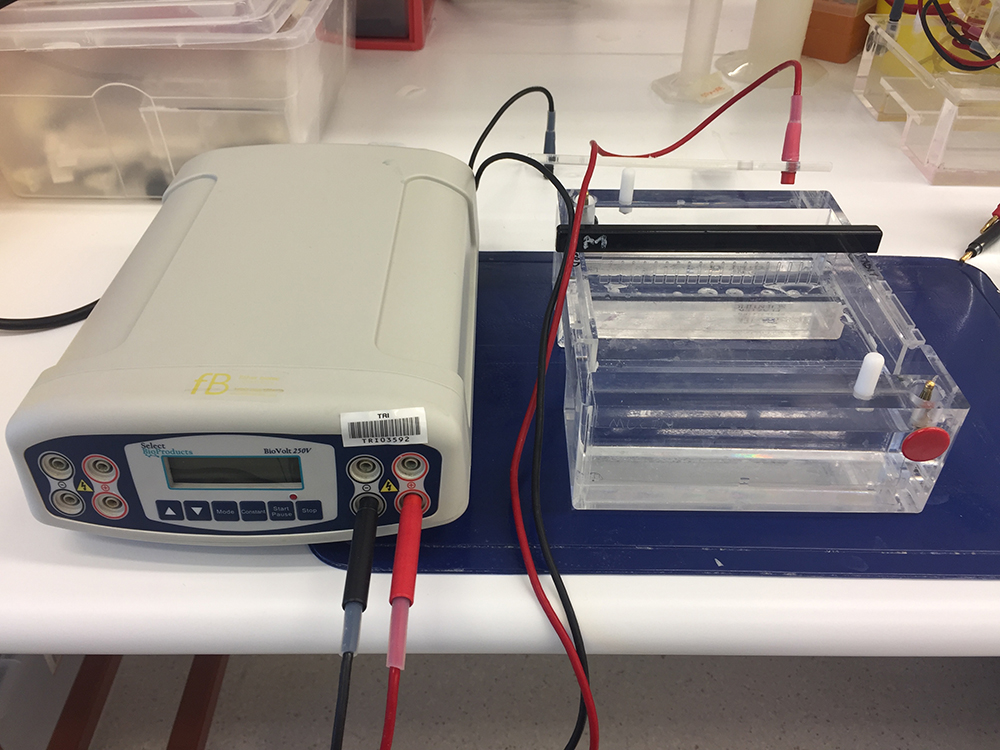
Figure 1. Electrophoresis gel tank (right) and electrophoresis power supply (left) for gel electrophoresis analyses of mucins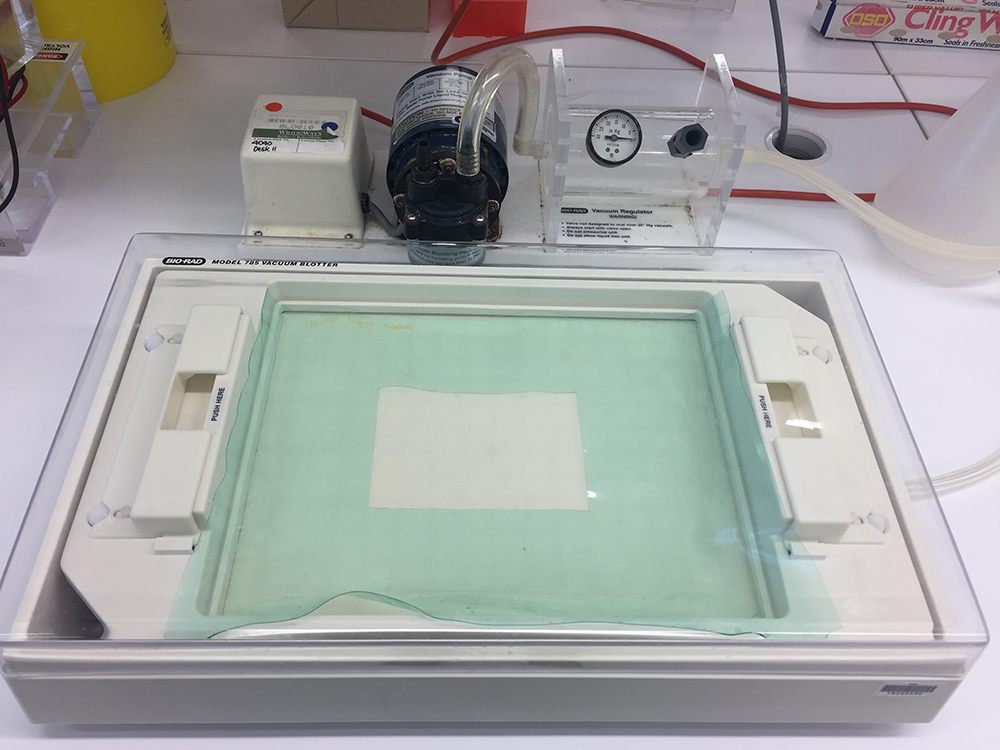
Figure 2. Vacuum Blotting Unit with vacuum blotter chamber (front) and vacuum pump (back)
Software
- NIS-Elements software v.3.0 (Nikon, Tokyo, Japan)
- Image StudioTM Lite software (LI-COR Biosciences)
Procedure
文章信息
版权信息
© 2017 The Authors; exclusive licensee Bio-protocol LLC.
如何引用
Wang, R. and Hasnain, S. Z. (2017). Analyzing the Properties of Murine Intestinal Mucins by Electrophoresis and Histology. Bio-protocol 7(14): e2394. DOI: 10.21769/BioProtoc.2394.
分类
免疫学 > 粘膜免疫学 > 消化道
癌症生物学 > 通用技术 > 生物化学试验 > 蛋白质分析
生物化学 > 蛋白质 > 电泳
您对这篇实验方法有问题吗?
在此处发布您的问题,我们将邀请本文作者来回答。同时,我们会将您的问题发布到Bio-protocol Exchange,以便寻求社区成员的帮助。
提问指南
+ 问题描述
写下详细的问题描述,包括所有有助于他人回答您问题的信息(例如实验过程、条件和相关图像等)。
Share
Bluesky
X
Copy link










